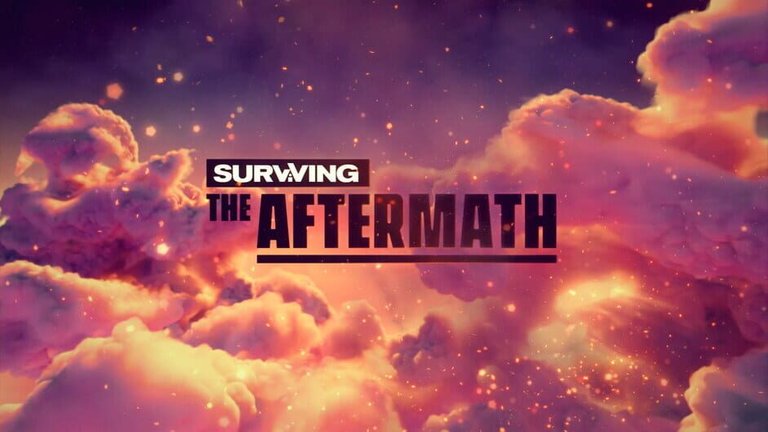
I'm a fan of the genre, and after playing it for over ten hours, I can say that I did enjoy it. However, little quirks keep weighing it down that, at worst, make the game incredibly tedious.
There are several positives and negatives about the game, but let me highlight a few ones that were standouts for me.
All images are owned by the developer, IceFlakes Studios, and the publisher, Paradox Interactive. I initially planned to use screenshots of my own gameplay. But after realizing how terrible the graphics quality of my own samples, I opted to use the higher-quality images from the official website and the press kit.
✅ Satisfying City Building 🏙️
Surviving the Aftermath has over a hundred buildable structures that are gradually unlocked, in true Civilization game-style, after completing its research on a tech tree. I like that the game gives players total freedom on what to prioritize or how they would like to mold their budding colony. One player's city could look totally different than another.
There's also a tangible feeling of progression throughout the game. At first, players are only limited to building scrappy shanties.
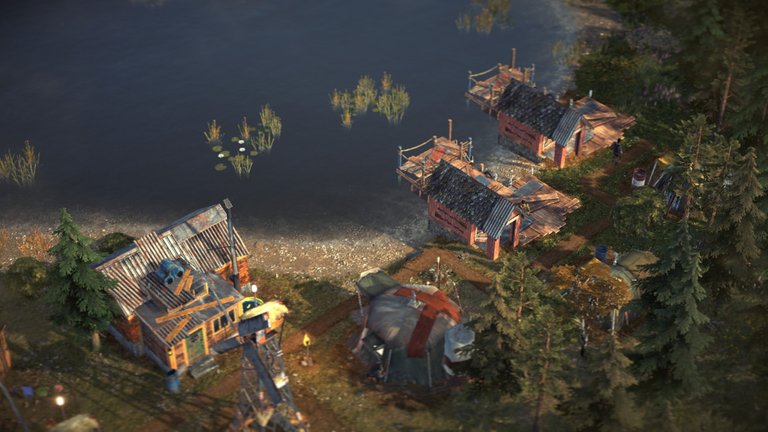
That eventually transforms into a thriving city with advanced features like a power plant, a hospital, and even a movie theatre. The material admittedly still looks junkyard bargain, though.

✅ Randomized Challenges 🔥
The map and all the elements in it are all procedurally-generated. Every time you start a new game, a map is created randomly, so no two gameplays are alike. Each would pose its own challenges, such as how many and accessible the resources are. During one playthrough, I had a shortage of the much-needed research points that hindered the development of my city's technology. It crippled my game. But on another try, I had more of those but fewer manpower resources.
Then there's one other aspect that randomization comes into play -- the catastrophes. Players will receive an alert that some impending calamity, such as an extreme heatwave, a winter storm, or a pandemic. 😩 We get a warning, but it's only a few days before it happens, so it's possible to be caught off guard. Such as the case of a pandemic event. It's close to impossible to overcome it if you haven't built enough clinics or improved your medical treatments long before.
The random maps and disasters keep each foray fresh. I haven't had the chance to encounter the lightning strikes pictured below, but it looks interesting to deal with.
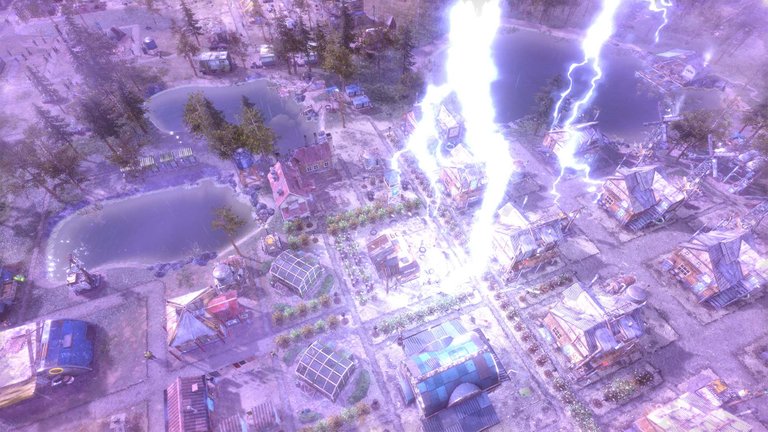
✅ Choices with Impact 💡
I am a sucker for choices, especially if it has a noticeable impact on the game world. It adds to the immersion factor, doesn't it? And there's no shortage of that element in Surviving the Aftermath.
There are random events that would pop up on the map. You can either ignore it and deal with the potential consequences or try to actively resolve whatever issue it is. One example is the question about how to handle a treehouse built by some rowdy kids behind everyone's backs. The wood resource can be put to better use, so you may choose to dismantle it. Or let them keep it, resulting in a happiness boost for the entire population. 💖
The treehouse event is one of those story choices having a lesser impact, but is still engaging and satisfying. However, more grave branching narratives are also present, such as in the choice between peacefully resolving an emerging conflict or going all-out in a bloody skirmish.

✅ People as a Resource 🧑🤝🧑
There are two types of recruitable people in the game. The first is the general populace who is the city's workforce. Players must keep them happy as disgruntled people work less efficiently and may also leave your city if morale drops too low. On all my playthroughs, I often find myself short on people. The population can grow organically (they make babies! 👶), but recruitment is the most convenient option. Opportunities for it rarely happen, though.

The other type are specialists who have advanced capabilities such as searching for resources or battling mobs in other cities. Specialists have stats like strength, move count, and scavenging rates, which are most relevant when sending them outside the city.
This part of the game is neither significantly attractive nor groundbreaking, so I won't dwell much on it. But know there's the main map where you build your city and an external map to hunt for more resources.
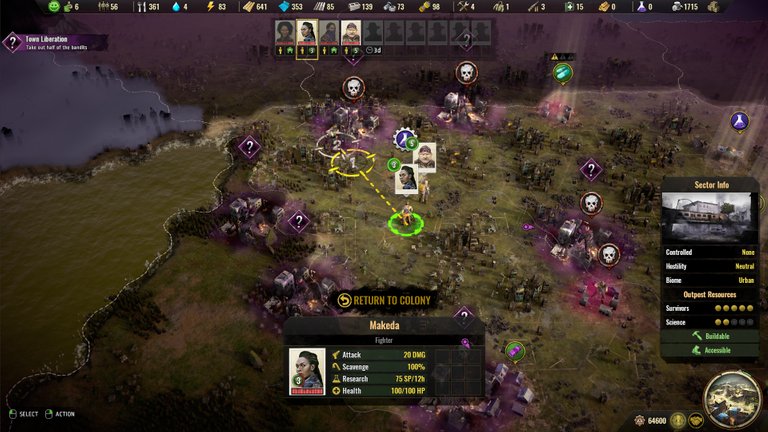
Now, unto the not-so-good aspects of the game. They aren't a lot, but it's impactful enough to dampen the gameplay experience.
❌ Visual Overload 💀
Too many times, I felt there were just too many things happening on the screen all at once. My eyes and head are getting assaulted by all the movements and animation.
I'm not convinced that the game needs to show each tree in the terrain swaying with the wind or how individual workers collect water from the small lake. It's an unnecessary movement on my periphery that I can't help but track on my screen, causing visual overload. Plus, the excess load pains the PC's graphics processor too.
Even odder, the studio did all that extra stuff on limited screen real estate but dismissed a more prominent and accessible user interface. I wished they focused on the UI, rather than the graphical minute details. I think no one's expecting the game to be beautiful or graphically advanced, so they should have trimmed the excess and just focused on the gameplay essentials.
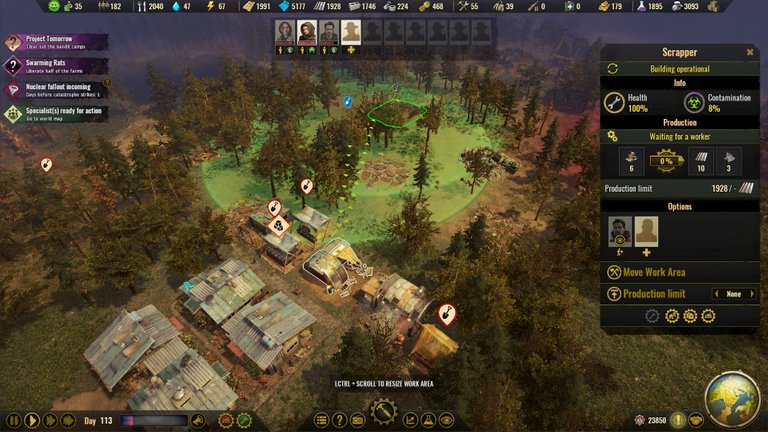
❌ No Fast-Forward Option 🐢
The game unfolds at three speeds of your choice, but the fastest still feels like a slog.
There are specific moments in the game where you need to pause it, so you can observe the entire map to plan out a strategy. But after getting the configuration down, players could speed up the game until some interesting event comes up. However, the fastest option isn't speedy enough. It feels like several minutes are wasted just staring at the screen. Since I had an issue with the cluttered visuals, the idle waiting is much more bothersome. It often feels like it's best to leave the game on the side of your screen if you have a large enough monitor or a two-monitor setup. Then, do something else while waiting for the game to progress.
These two negatives aren't dealbreakers, but it's still frustrating. Especially since these could have been quickly resolved if the devs and QA people have paid enough attention.
The Final Verdict
Surviving the Aftermath is a worthwhile strategy simulation game, despite the troubling flaws that diminish the play experience. Fans of the genre would likely have a good time. Just be more forgiving and lenient, and consider this was a game created by a small startup studio. And avoid thinking of it as a game released in late 2021 to lessen expectations, since it plays and looks dated.
If you're unconvinced by it, you can check out better similar games such as Frostpunk or a game from the same publisher, Surviving Mars. I haven't played Surviving Mars yet, but it has generally received more favorable reviews. While with Frostpunk, I can attest that it's design and gameplay are far superior, a better game on all fronts.
But I still enjoyed my time with Surviving The Aftermath. Enough to make me come back to try to build a close-to-perfect city for my digital residents. 👍👍👍
Surviving the Aftermath is on sale in Humble Bundle Choice for this May, 2022.
You can also read my other Game Reviews:
This War of Mine. A choice-heavy simulation game about the impact of war on the common people.
Suzerain. Another choice-heavy game that lets you be the president.
Attributions:
----------
Surviving the Aftermath assets are owned by Paradox Interactive and Ice Flake Studios. Images on this post are from the game's official site, press kit, and Steam store page.

